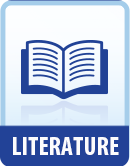|
This section contains 2,316 words (approx. 8 pages at 300 words per page) |

|
SOURCE: "Conclusion," in James Thomson, Macmillan and Co., Limited, 1908, pp. 234-42.
In the excerpt below, Macauley examines Thomson's influence on later poets, especially as the decades led into Romanticism. He asserts that the primary distinction between Thomson and the Romantics is their differing concepts of nature.
Hardly any English eighteenth-century poet, who wrote after Thomson, was quite uninfluenced by him. The use of blank verse in narrative and descriptive poetry became a fashion. Mallet's Excursion, in 1728, Somerville's Chase, 1734, Glover's Leonidas, 1737, Young's Night Thoughts, 1742, Akenside's Pleasures of the Imagination, and Armstrong's Art of Preserving Health, both in 1744, all in a certain sense owe their form of verse to Thomson's bold initiative. So great was the vogue, that Goldsmith, in 1765, sets down blank verse, in company with party spirit, as one of the almost indispensable conditions of popularity: "What reception a poem may find which has neither abuse, party, nor...
|
This section contains 2,316 words (approx. 8 pages at 300 words per page) |

|


